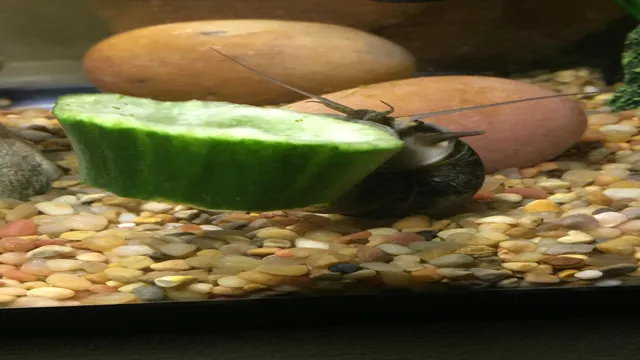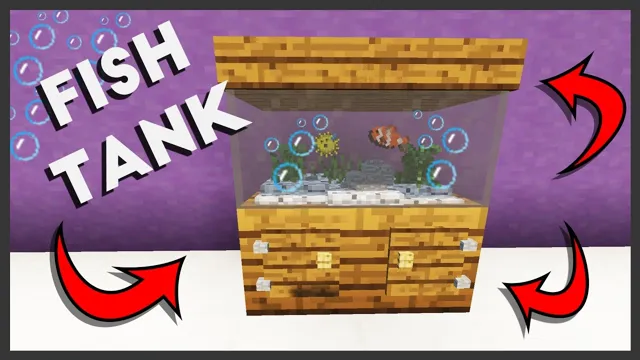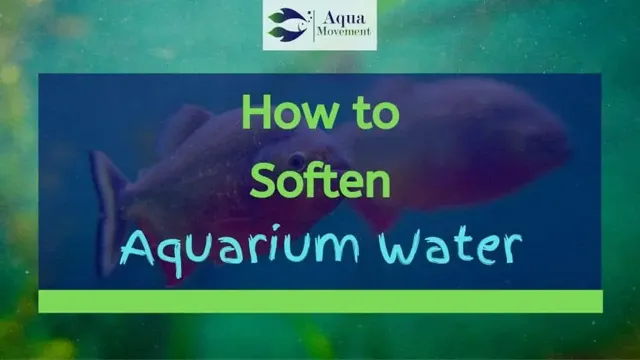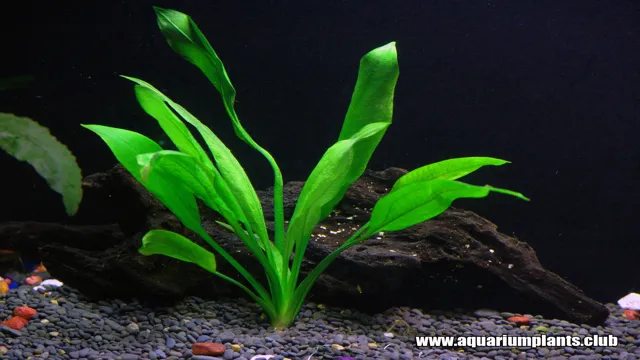If you’re thinking about adding Gish or Snail Cucumbers to your aquarium, you’ll need to know how to properly feed them to ensure their health and longevity. These creatures may seem easy to care for since they are primarily detritivores, but they still need a healthy diet to thrive. In this guide, we’ll provide you with everything you need to know to keep your Gish and Snail Cucumbers happy and well-fed.
From the best food options to feeding frequency, we’ll cover it all, so you can give your aquatic pets a long and wonderful life. So, let’s dive in and explore the world of feeding Gish and Snail Cucumbers!
Introduction
Have you ever wondered how to give gish and snail cucumbers in your aquarium? Well, it’s actually pretty simple! These veggies are great sources of nutrients for your aquatic friends. All you need to do is slice them up into small pieces and drop them in the tank. Gish and snails will slowly start to make their way towards the new food source.
It’s important to make sure that the cucumber pieces are firm, as soft or mushy pieces can cause water quality issues. You can also supplement their diet with other veggies like zucchini or carrots for added variety. In no time, your aquarium inhabitants will be munching away happily on their fresh veggies!
Explaining the importance of feeding fish and snails properly
When it comes to keeping fish and snails as pets, proper feeding is essential for their health and well-being. As an aquatic animal owner, it’s your responsibility to ensure that they receive the nutrients and sustenance they need to thrive. It’s important to choose the right kind of food for your fish and snails as different species have varying dietary needs.
For instance, some fish are carnivorous, while others are herbivorous or omnivorous. Similarly, different snail species may require different kinds of food, so it’s important to research their specific dietary requirements. Overfeeding or underfeeding can be detrimental to their health, so it’s crucial to establish a feeding schedule and stick to it.
By taking good care of your aquatic pets, you can help them lead healthy and happy lives in your aquarium/home.

Benefits of adding cucumbers to their diet
Cucumbers are a delicious and healthy addition to any diet. Not only are they low in calories, but they also contain high levels of water, making them an excellent source of hydration. Additionally, cucumbers are packed with nutrients such as vitamin C, vitamin K, and potassium.
These nutrients work together to support digestive health, boost immunity, and improve skin health. The dietary fiber found in cucumbers also helps to stabilize blood sugar levels and promote healthy digestion. Incorporating cucumbers into your meals is as easy as adding them to salads, sandwiches, or enjoying them as a refreshing snack.
By doing so, you’ll reap the numerous benefits of this versatile vegetable while also satisfying your taste buds.
Preparing the Cucumbers
If you have gish and snails in your aquarium and want to give them cucumbers as a treat, it’s important to prepare the cucumbers properly. First, select fresh, firm cucumbers without any signs of rot or mold. Then, wash them thoroughly to remove any pesticides or dirt.
Next, slice them into thin rounds or wedges and remove the seeds using a spoon or knife. This step is crucial because the seeds can cause digestive issues for your aquatic pets. Once the cucumbers are ready, you can drop them into the tank or attach them to a clip for easy access.
Remember to remove any uneaten cucumbers after a few hours to prevent them from decaying and polluting the water. With these simple steps, you can give your gish and snails a healthy and delicious snack while keeping their tank clean and safe.
Selecting fresh and firm cucumbers
When selecting cucumbers for preparation, it’s important to choose fresh and firm ones. Look for cucumbers that are uniform in shape, without any bumps or bruises. To check for freshness, give them a gentle squeeze. (See Also: Where to Put Ceramic Rings in Top Fin Aquarium for Optimal Performance)
Fresh cucumbers should be firm, without any mushiness or give. To further ensure that your cucumbers are crisp and delicious, consider storing them in the refrigerator before using. This will help keep them fresh and firm, allowing for maximum flavor and texture.
By taking the time to carefully select and prepare your cucumbers, you’ll be able to enjoy their delicious taste and refreshing crunch in a variety of dishes. So the next time you’re at the grocery store, be sure to choose the best cucumbers for your cooking needs.
Cleaning and slicing cucumbers correctly
When it comes to preparing cucumbers, cleaning and slicing them correctly is important in order to get the most out of this delicious and healthy vegetable. Start by washing the cucumbers thoroughly under running water, using a mild vegetable scrubber if necessary to remove any dirt or debris. Then, using a sharp knife, remove the ends of the cucumber and discard them.
If the cucumber has a wax coating, you can remove it by gently rubbing it with a vegetable peeler. Next, you can choose how you want to slice your cucumber depending on your preference. You can slice it thinly and use it to add crunch to salads, or slice it thicker if you want to use it for dipping.
You can also cut the cucumber into rounds or spears depending on what you’re using it for. Remember to always use a sharp knife when slicing cucumbers to prevent crushing or bruising the vegetable. Once your cucumbers are sliced, you can use them immediately in your recipes or store them in an airtight container in the fridge for later use.
By following these simple steps, you can prepare cucumbers in a way that maximizes their flavor and texture. So the next time you’re cooking with cucumbers, give them the proper cleaning and slicing they deserve for a delicious and nutritious meal.
Feeding Gish and Snail Cucumbers
If you have gish and snail in your aquarium, you may be wondering what their diet should consist of. Luckily, cucumbers are a great option for both gish and snail. To feed them cucumber, start by selecting a fresh piece of cucumber and washing it thoroughly.
Cut a slice of cucumber and blanch it for a few minutes in boiling water. After removing the slice from the boiling water, let it cool down before placing it in your aquarium. Both gish and snail will enjoy eating the cucumber as it provides them with a healthy source of food.
Just make sure to remove any uneaten pieces of cucumber after a few hours to prevent it from decomposing and harming your aquarium’s water quality. By following these steps, you can easily provide your gish and snail with a nutritious and delicious meal.
Proper quantity of cucumbers to feed each day
When it comes to feeding fish and snails cucumbers, it’s important to remember that these veggies shouldn’t be the only thing on their menu. While cucumbers are a healthy and delicious addition to their diet, they should only make up a small part of it. As a general rule of thumb, you should aim to feed your fish or snail no more than a quarter of a cucumber at a time, and only once or twice a week.
Overfeeding cucumbers can lead to digestive problems and even water quality issues in your tank, so it’s better to be cautious and stick to smaller portions. Additionally, it’s important to make sure the cucumber is fresh and clean before feeding it to your aquatic pets. Rinse it thoroughly with water and cut it into small pieces that are easy for them to eat.
Remember, a balanced diet is key to keeping your fish and snails healthy and happy, so don’t rely on cucumbers alone as their sole source of nutrition. (See Also: How to Clean Lid for Aquarium Hermit Crabs & Ensure a Healthy Habitat)
Methods of feeding: raw, boiled, or frozen
Feeding Gish and Snail Cucumbers is easy-peasy when you understand the different methods of feeding. You can either feed them raw, boiled, or frozen cucumbers depending on your preference. Raw cucumbers are great for Gish and Snail Cucumbers as a source of fiber that helps to aid digestion.
However, boiled cucumbers are perfect for Snail Cucumbers that have trouble processing raw vegetables. Freezing cucumbers offer a different feeding option, especially if you’re dealing with a picky eater who tends to reject other food options. When feeding Gish and Snail Cucumbers, you should always make sure to offer them a balanced diet with enough nutrients to promote healthy growth.
In conclusion, whether you feed your Gish and Snail Cucumbers raw, boiled, or frozen cucumbers, always ensure that you give them the best nutrient-rich meals to promote their longevity and well-being.
Monitoring and Adjusting feeding habits
As aquarium enthusiasts, one of the most important things we need to consider is the feeding habits of our aquatic pets. Giving cucumbers to gish and snails is a great way to ensure that they receive the necessary nutrients that they need to thrive in their environment. However, it is essential to monitor their feeding habits and adjust accordingly.
Overfeeding or underfeeding can be detrimental to their health, so it’s crucial to strike a balance. You can start by cutting the cucumber into thin slices and placing them in a dish or clip, then observing how much they eat. If they finish the cucumber quickly, you may need to add more, but if they leave some uneaten, reduce the serving size.
Remember to remove any leftover food promptly to prevent foul water conditions. By monitoring and adjusting their feeding habits, you can provide a healthy and balanced diet for your underwater pets.
Potential negative effects of overfeeding cucumbers
When it comes to feeding your cucumber plants, it’s important to avoid overfeeding to prevent potential negative effects. Overfeeding cucumbers can lead to an excess of nitrogen, which can hinder fruit production and even lead to leaf burn. This is why it’s important to closely monitor your feeding habits and adjust as necessary.
If you notice signs of overfeeding, such as yellowing leaves or stunted growth, it’s best to cut back on the amount of fertilizer or nutrients you’re providing. It’s also important to ensure that your plants are getting enough water to properly absorb the nutrients they receive. By paying close attention to your feeding habits and making adjustments as needed, you can help support healthy cucumber growth without risking the negative effects of overfeeding.
Observing fish and snails for signs of malnutrition or overfeeding
When it comes to fish and snails, it’s important to monitor and adjust their feeding habits. Overfeeding can lead to health problems, while malnutrition can be equally as damaging. Signs of malnutrition include a lack of energy, slowed growth, and reduced vibrancy in color.
On the other hand, overfeeding can lead to lethargy, bloating, and even death. It’s essential to observe your aquatic pets for any signs of these issues and adjust their feeding habits accordingly. Think of it like a balancing act- you want to provide enough food to keep them healthy and happy, but not too much.
A helpful way to maintain this balance is to only feed them the amount of food they can consume in a few minutes, removing any uneaten food after that time. By taking the time to monitor and adjust their feeding habits, you can help ensure that your fish and snails are thriving.
Conclusion
In conclusion, giving gish and snail cucumbers in your aquarium is not just about feeding your pets, it’s about maintaining a healthy balance in your aquatic ecosystem. These little veggie treats provide essential nutrients and play an important role in keeping your tank clean and tidy. Don’t be shellfish, give your gish and snails the cucumbers they deserve and watch your aquarium flourish! It’s a win-win situation – your pets get a tasty treat and you get a beautiful and thriving underwater world to admire.
Happy feeding!” (See Also: How Often to Use Water Conditioner in Aquarium- A Comprehensive Guide)
Summary of the importance of proper feeding in maintaining a healthy aquarium environment
Proper feeding is crucial in maintaining a healthy aquarium environment, and monitoring and adjusting feeding habits play a significant role in achieving this goal. Overfeeding can lead to the accumulation of excess waste and harmful bacteria, causing a decline in water quality and, ultimately, the health of the aquatic inhabitants. Underfeeding, on the other hand, can result in malnourishment and weak immune systems, making the fish susceptible to diseases and infections.
Therefore, it’s essential to establish a regular feeding routine, keeping in mind the specific dietary requirements of each species and adjusting the feeding frequency and quantity accordingly. It’s also crucial to remove uneaten food promptly to avoid contamination and maintain water quality. With a proper feeding regimen and careful monitoring, fish can thrive and live long, healthy lives in an aquatically balanced environment.
FAQs
Can I give gish and snail cucumbers in my aquarium?
Yes, you can give cucumber pieces to your aquarium’s fish and snails. They will enjoy eating it, and it is a healthy food option.
How should I prepare the cucumber for my aquarium?
Cut the cucumber into small pieces and remove any seeds. You can blanch them in boiling water for a minute or freeze them for a couple of hours to make them softer.
How often should I give my aquarium fish and snails cucumbers?
You can give cucumber to your aquarium’s inhabitants once or twice a week. However, make sure to remove any uneaten pieces after 24 hours to prevent decay.
Do all fish and snails eat cucumbers?
Not all fish and snails eat cucumber. Some popular cucumber eaters include plecos, corydoras, and snails like nerite and mystery snails.
Is cucumber a suitable food for betta fish?
Bettas are carnivores and prefer live or frozen food. While cucumber is not a proper meal for betta fish, you can still give them a tiny piece occasionally as a treat.
Can cucumber cause any health problems in aquarium fish and snails?
Cucumber is a safe and healthy food option for aquarium fish and snails. However, overfeeding can lead to a high level of nitrates in the water, causing health problems.
What are the other vegetable options I can give to my aquarium fish and snails?
Some other vegetable options for aquarium inhabitants include spinach, lettuce, and zucchini. Ensure that you remove any uneaten vegetables from the tank after feeding.







